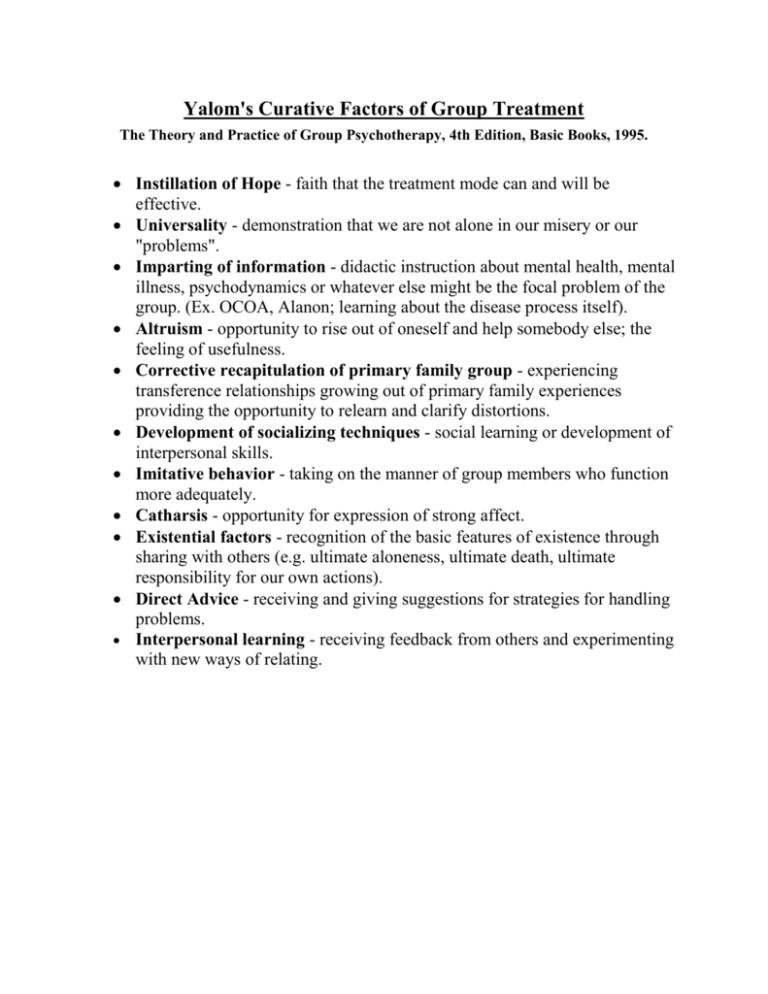

Dies, “Co-Therapist Modeling in Group Psychotherapy: Fact or Fantasy,” Group 17 (1993): 131–42.ĥ5 E. Cohen, “Content Considerations in Group Therapist Self-Disclosure,” International Journal of Group Psychotherapy 26 (1976): 71–88.ĥ4 S. Dies, “Group Therapist Transparency: A Critique of Theory and Research,” International Journal of Group Psychotherapy 27 (1977): 177–200. MacKenzie (New York: International Universities Press, 1983), 27–78. Dies, “Leadership in Short-Term Groups,” in Advances in Group Psychotherapy, ed. Parloff, “Discussion of Accelerated Interaction: A Time-Limited Approach Based on the Brief Intensive Group,” International Journal of Group Psychotherapy 28 (1968): 239–44.ĥ2 Ferenczi, quoted in M. Tarrant, ”Does Group Climate Mediate the Group Leadership-Group Member Outcome Relationship? A Test of Yalom’s Hypothesis About Leadership Priorities,” Group Dynamics: Theory, Research and Practice 3 (2001): 220–34.ĥ1 M. It brings to mind Saul Bellow’s fanciful notion in Seize the Day (New York: Viking Press, 1956) of someone tilting a large, flat map of the United States and observing that “everything that wasn’t bolted or screwed down slid into Southern California.”ĥ0 D. Many of the wilder innovations in therapy have sprung from Southern California. In the late 1960s and early 1970s, the mass media (for example, Time magazine) gave considerable coverage to nude marathons in Southern California ( Time, February 23, 1968, 42). Then there is the ultimate in self-disclosure: group therapy in the nude.

The sheer physical fatigue wore down defenses and abetted maximal disclosure. Elfant, “Group Psychotherapist Self-Disclosure: Why, When, and How?” presented at the annual meeting of the American Group Psychotherapy Association, New Orleans, February 21, 2003.Ĥ9 Self-disclosure was carried to extreme in the time-extended marathon groups popular in the 1970s (see chapter 10), which met from twenty-four to forty-eight consecutive hours and placed paramount emphasis on total self-disclosure of the group as well as the group leader. Gabbard, “Misuses and Misunderstandings of Boundary Theory in Clinical and Regulatory Settings,” American Journal of Psychiatry 155 (1998): 409–14. Gabbard, “The Concepts of Boundaries in Clinical Practice: Theoretical and Risk-Management Dimensions,” American Journal of Psychiatry 150 (1993): 188–96.Ĥ8 T. Ullman, “Unwitting Exposure of the Therapist Transferential and Countertransferential Dilemmas,” Journal of Psychotherapy Practice and Research 10 (2001): 14–21.Ĥ7 T. Gabbard, “Therapeutic Self-Disclosure with Borderline Patients,” Journal of Psychotherapy Practice and Research 2 (1993): 282–95.Ĥ6 K.


 0 kommentar(er)
0 kommentar(er)
